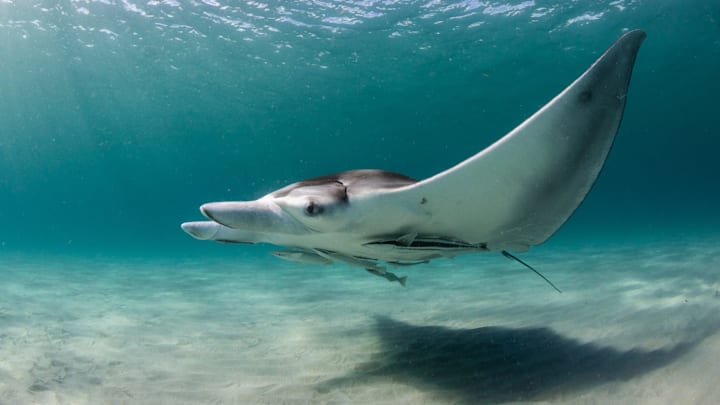New sea animals are discovered every year, and 2025 is no different. Thanks to conservation biologist Andrea Marshall and her team, a new manta ray has been identified, joining just two other manta ray species previously known to science.
Say Hello to Mobula Yarae

The animal in question was dubbed the Atlantic manta ray, as it typically dwells in the Atlantic Ocean waters that extend from the eastern part of the U.S. to Brazil. Like its manta cousins, it’s massive, growing up to 20 feet wide. Its scientific name, Mobula yarae, is inspired by a water spirit from Indigenous Brazilian mythology named Yara, according to a statement from the Marine Megafauna Foundation.
Marshall, co-founder of the non-profit and co-author of the study detailing the find in Environmental Biology of Fishes, first noticed the unique manta ray gliding near the eastern coast of Mexico about 15 years ago. The species’ classification was made official only recently, which is around the typical timeline for the identification and registration of a newly discovered organism. (According to the Ocean Census, the process usually takes up to 13.5 years.)
Per Smithsonian, Marshall spent those years carefully examining different manta rays to ensure that the Atlantic manta ray was indeed a separate species. She got the ultimate confirmation after studying a deceased female juvenile that washed ashore in Florida in 2017. Additionally, DNA evidence suggests that M. yarae evolved from the giant oceanic manta ray elatively recently.
This is the second new manta ray species Marshall has helped identify. The biologist and her colleagues described the reef manta for the first time in 2009. Prior to that, the giant oceanic manta ray was the only manta ray recognized by science.
How to Tell Mobula Yarae Apart From Other Manta Rays

M. yarae shares characteristics, such as pattern and fin shape similarities, with the giant oceanic manta ray and reef manta ray. However, the new species has some distinctive features, as reported by the Marine Megafauna Foundation:
- M. yarae has more pronounced V-shaped marks on its shoulders compared to the other species.
- Its face coloration is lighter compared to giant oceanic manta rays.
- All of these manta rays have dark spots on their undersides, but the Atlantic manta ray’s markings are usually only on its abdomen, which is not a typical placement on reef mantas.
If you’re one to confuse sting rays with skates, you aren’t alone. There are many differences between the marine animals you can read about here.
Read More About Ocean Animals:
